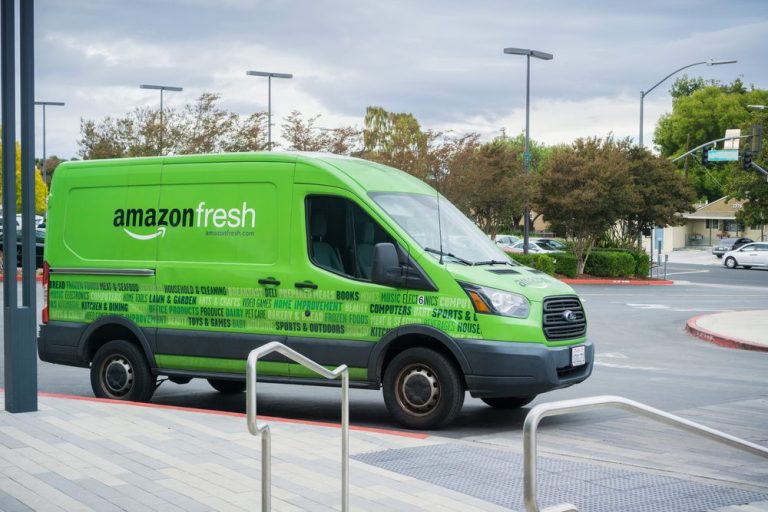
Amazon is raising the amount Prime members must spend to get free grocery delivery.
Effective Feb. 28, members must order $150 for free delivery from Amazon Fresh. For smaller orders, there will be three tiers of services fees: $3.95 for orders between $100 and $150, $6.95 for those between $50 and $100 and $9.95 for those under $50, according to Amazon’s website.
Currently, Prime subscribers can get free delivery on orders of $35 or more, according to multiple media reports.
A competing membership program, Walmart+, offers free delivery of groceries and other products for orders of $35 or more.
In a statement provided to PYMNTS, an Amazon spokesperson said: “We’re introducing a service fee on some Amazon Fresh delivery orders to help keep prices low in our online and physical grocery stores as we better cover grocery delivery costs and continue to enable offering a consistent, fast and high-quality delivery experience. We will continue to offer convenient two-hour delivery windows for all orders, and customers in some areas will be able to select a longer delivery window for a reduced fee.”
PYMNTS reported in December 2021 that Amazon-owned Whole Foods saw orders drop after adding a new $9.95 delivery fee after offering free delivery to Amazon Prime members.
Delivery charges have been a point of contention for other grocers, too.
Amazon’s latest move comes when there is growing competition in the grocery delivery business, with grocers using multiple delivery companies to negotiate better terms, build their own networks or encourage a return to in-person shopping.
In this environment, Instacart recently lowered its internal valuation by 20%, marking the fourth such reduction in 2022, The Information reported Dec. 27.
PYMNTS research found in December 2022 that grocery delivery subscriptions saw the most pronounced “scale back” among the pillars of digital transactional activity covered in a recent report.
Grocery subscription engagement showed a 4.5% sequential reduction in the third quarter of 2022 versus the second quarter — outpacing the 2% declines seen in consumers’ use of telemedicine and restaurant apps — according to “How the World Does Digital: Different Paths to Digital Transformation.”